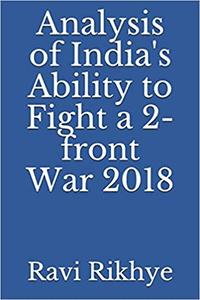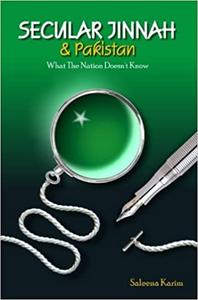Analysis of India's Ability to Fight a 2-front War 2018
"softddl.org"
8-12-2020, 13:03
-
Share on social networks:
-
Download for free: Analysis of
-

Ravi Rikhye, "Analysis of India's Ability to Fight a 2-front War 2018"
English | ISBN: 1720001782 | 2018 | 457 pages | AZW3 | 4 MB
The analysis asks one question and has one answer: Can India fight a two-front war against China and Pakistan? The answer is it cannot. Because of the China-Pakistan alliance, we cannot fight even a one-front war: engaging in a war with either adversary runs the risk of weakening the other front, leaving it open to exploitation. The solution, fortunately, is straightforward: build a 2-front war capability. The next problem is equally straightforward: The Government of India is determined not to spend money on defense. Today spending is down to 1.56% of GDP, lower even than in 1962. And we know how that ended. It takes little imagination to foresee what would have happened if 1962 had become 2-front: Pakistan would have walked over Punjab, perhaps all the way to Delhi, and we would have lost Kashmir too. If we chose to defend Punjab, we would have lost the North East Frontier Agency, now called Arunachal. If we tried to defend both fronts, we would have lost both. For a strong defensive posture, we need to spend the 3 - 3.5% of GDP we spent 1963-1990, both to modernize and to raise eight more divisions that is the minimum needed. To negotiate from strength, we need 4%+ and to recover our lost territories we need 6%. Our spending is 1.6% of GDP, lower even than the 1.9% of 1962. Theoretically, India can fight a 2-front war on land. It can defend its "Near Seas": The Bay of Bengal, the East Arabian Sea, the Gulf of Munnar (waters between India and Sri Lanka), and the Andaman Sea. The Air Force continues deteriorating, it can fight a 1-front war but not two. There are, however, severe problems on the ground. This should not be the situation on the face of it. China can comfortably deploy 10 divisions, Pakistan has 25, including one it calls Force Command Northern Areas, and two it calls "Corps Reserve". That is 35 versus India's 38. The matter is, however, more complex than a simple division count. First, China has ended its policy of assigning formations permanently to a theatre for regional defense. Its entire ground force, including airborne troops under the air force and marine brigades under the navy, amount to 90 brigade groups that are being trained to fight in any theatre. Further, China still retains at least six divisions. We don't know yet if they will remain as divisions; nonetheless, it is best to include the, giving China 108 brigades. Still further, China retains many reserve brigades. These, while unable to assume a first-line role, can provide defense in depth, follow-up forces, and cover secondary sectors. Next, because of the Government of India's etched-in-stone policy that ever meter of ground must be held, we need more brigades to divisions to defend than Pakistan does. This is discussed in detail. For now, accept that India needs one more division for each of XV, XVI, IX, XI, and XII Corps, and three more for Ladakh-Himachal-Uttarakhand. The Northeast is reasonably defended thanks to the four new divisions we raised. Should that not suffice for a 2-front defense, 46 divisions versus China-Pakistan's 38? Yes - but defense, not for offensive war. Without an offensive capability, we can stabilize our fronts with 29 divisions against Pakistan and 14 against China, which will leave both free to attack again. This book argues that for a proper 2-front defensive capability, India immediately needs eight more divisions, two corps HQs, and 12 new brigades. The remaining twelve brigades will come from existing formations. Immediately does not mean spread over 10-years in the future. It means the authorization and funding must be made now, and the job completed in 3-years.
 Ravi Rikhye, "Analysis of India's Ability to Fight a 2-front War 2018" English | ISBN: 1720001782 | 2018 | 457 pages | AZW3 | 4 MB The analysis asks one question and has one answer: Can India fight a two-front war against China and Pakistan? The answer is it cannot. Because of the China-Pakistan alliance, we cannot fight even a one-front war: engaging in a war with either adversary runs the risk of weakening the other front, leaving it open to exploitation. The solution, fortunately, is straightforward: build a 2-front war capability. The next problem is equally straightforward: The Government of India is determined not to spend money on defense. Today spending is down to 1.56% of GDP, lower even than in 1962. And we know how that ended. It takes little imagination to foresee what would have happened if 1962 had become 2-front: Pakistan would have walked over Punjab, perhaps all the way to Delhi, and we would have lost Kashmir too. If we chose to defend Punjab, we would have lost the North East Frontier Agency, now called Arunachal. If we tried to defend both fronts, we would have lost both. For a strong defensive posture, we need to spend the 3 - 3.5% of GDP we spent 1963-1990, both to modernize and to raise eight more divisions that is the minimum needed. To negotiate from strength, we need 4%+ and to recover our lost territories we need 6%. Our spending is 1.6% of GDP, lower even than the 1.9% of 1962. Theoretically, India can fight a 2-front war on land. It can defend its "Near Seas": The Bay of Bengal, the East Arabian Sea, the Gulf of Munnar (waters between India and Sri Lanka), and the Andaman Sea. The Air Force continues deteriorating, it can fight a 1-front war but not two. There are, however, severe problems on the ground. This should not be the situation on the face of it. China can comfortably deploy 10 divisions, Pakistan has 25, including one it calls Force Command Northern Areas, and two it calls "Corps Reserve". That is 35 versus India's 38. The matter is, however, more complex than a simple division count. First, China has ended its policy of assigning formations permanently to a theatre for regional defense. Its entire ground force, including airborne troops under the air force and marine brigades under the navy, amount to 90 brigade groups that are being trained to fight in any theatre. Further, China still retains at least six divisions. We don't know yet if they will remain as divisions; nonetheless, it is best to include the, giving China 108 brigades. Still further, China retains many reserve brigades. These, while unable to assume a first-line role, can provide defense in depth, follow-up forces, and cover secondary sectors. Next, because of the Government of India's etched-in-stone policy that ever meter of ground must be held, we need more brigades to divisions to defend than Pakistan does. This is discussed in detail. For now, accept that India needs one more division for each of XV, XVI, IX, XI, and XII Corps, and three more for Ladakh-Himachal-Uttarakhand. The Northeast is reasonably defended thanks to the four new divisions we raised. Should that not suffice for a 2-front defense, 46 divisions versus China-Pakistan's 38? Yes - but defense, not for offensive war. Without an offensive capability, we can stabilize our fronts with 29 divisions against Pakistan and 14 against China, which will leave both free to attack again. This book argues that for a proper 2-front defensive capability, India immediately needs eight more divisions, two corps HQs, and 12 new brigades. The remaining twelve brigades will come from existing formations. Immediately does not mean spread over 10-years in the future. It means the authorization and funding must be made now, and the job completed in 3-years. Buy Premium From My Links To Get Resumable Support,Max Speed & Support Me
Ravi Rikhye, "Analysis of India's Ability to Fight a 2-front War 2018" English | ISBN: 1720001782 | 2018 | 457 pages | AZW3 | 4 MB The analysis asks one question and has one answer: Can India fight a two-front war against China and Pakistan? The answer is it cannot. Because of the China-Pakistan alliance, we cannot fight even a one-front war: engaging in a war with either adversary runs the risk of weakening the other front, leaving it open to exploitation. The solution, fortunately, is straightforward: build a 2-front war capability. The next problem is equally straightforward: The Government of India is determined not to spend money on defense. Today spending is down to 1.56% of GDP, lower even than in 1962. And we know how that ended. It takes little imagination to foresee what would have happened if 1962 had become 2-front: Pakistan would have walked over Punjab, perhaps all the way to Delhi, and we would have lost Kashmir too. If we chose to defend Punjab, we would have lost the North East Frontier Agency, now called Arunachal. If we tried to defend both fronts, we would have lost both. For a strong defensive posture, we need to spend the 3 - 3.5% of GDP we spent 1963-1990, both to modernize and to raise eight more divisions that is the minimum needed. To negotiate from strength, we need 4%+ and to recover our lost territories we need 6%. Our spending is 1.6% of GDP, lower even than the 1.9% of 1962. Theoretically, India can fight a 2-front war on land. It can defend its "Near Seas": The Bay of Bengal, the East Arabian Sea, the Gulf of Munnar (waters between India and Sri Lanka), and the Andaman Sea. The Air Force continues deteriorating, it can fight a 1-front war but not two. There are, however, severe problems on the ground. This should not be the situation on the face of it. China can comfortably deploy 10 divisions, Pakistan has 25, including one it calls Force Command Northern Areas, and two it calls "Corps Reserve". That is 35 versus India's 38. The matter is, however, more complex than a simple division count. First, China has ended its policy of assigning formations permanently to a theatre for regional defense. Its entire ground force, including airborne troops under the air force and marine brigades under the navy, amount to 90 brigade groups that are being trained to fight in any theatre. Further, China still retains at least six divisions. We don't know yet if they will remain as divisions; nonetheless, it is best to include the, giving China 108 brigades. Still further, China retains many reserve brigades. These, while unable to assume a first-line role, can provide defense in depth, follow-up forces, and cover secondary sectors. Next, because of the Government of India's etched-in-stone policy that ever meter of ground must be held, we need more brigades to divisions to defend than Pakistan does. This is discussed in detail. For now, accept that India needs one more division for each of XV, XVI, IX, XI, and XII Corps, and three more for Ladakh-Himachal-Uttarakhand. The Northeast is reasonably defended thanks to the four new divisions we raised. Should that not suffice for a 2-front defense, 46 divisions versus China-Pakistan's 38? Yes - but defense, not for offensive war. Without an offensive capability, we can stabilize our fronts with 29 divisions against Pakistan and 14 against China, which will leave both free to attack again. This book argues that for a proper 2-front defensive capability, India immediately needs eight more divisions, two corps HQs, and 12 new brigades. The remaining twelve brigades will come from existing formations. Immediately does not mean spread over 10-years in the future. It means the authorization and funding must be made now, and the job completed in 3-years. Buy Premium From My Links To Get Resumable Support,Max Speed & Support Me  https://uploadgig.com/file/download/8299852d3a318964/0wk3v.Analysis.of.Indias.Ability.to.Fight.a.2front.War.2018.rar
https://uploadgig.com/file/download/8299852d3a318964/0wk3v.Analysis.of.Indias.Ability.to.Fight.a.2front.War.2018.rar  https://rapidgator.net/file/296f25f0c142b6a4fc3b563f10f7bc9e/0wk3v.Analysis.of.Indias.Ability.to.Fight.a.2front.War.2018.rar.html
https://rapidgator.net/file/296f25f0c142b6a4fc3b563f10f7bc9e/0wk3v.Analysis.of.Indias.Ability.to.Fight.a.2front.War.2018.rar.html  http://nitroflare.com/view/D29B836C346DDD9/0wk3v.Analysis.of.Indias.Ability.to.Fight.a.2front.War.2018.rar
http://nitroflare.com/view/D29B836C346DDD9/0wk3v.Analysis.of.Indias.Ability.to.Fight.a.2front.War.2018.rar
The minimum comment length is 50 characters. comments are moderated

![A History of India [Audiobook]](https://i114.fastpic.ru/big/2020/1213/dc/178dcb1ddfe7ff64b5de5a9f43510bdc.jpeg)

![Firebrand Dispatches from the Front Lines of the MAGA Revolution [Audiobook]](https://i114.fastpic.ru/big/2020/1217/cb/12d25e083a375edb811d74d80405e0cb.jpeg)
